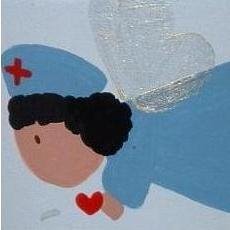21. A 65 year old man has been admitted to the hospital for spinal stenosis surgery. When does the discharge training and planning begin for this patient?
A: Following surgery
B: Upon admit
C: Within 48 hours of discharge
D: Preoperative discussion
22. A child is 5 years old and has been recently admitted into the hospital. According to Erickson which of the following stages is the child in?
A: Trust vs. mistrust
B: Initiative vs. guilt
C: Autonomy vs. shame
D: Intimacy vs. isolation
23. A toddler is 16 months old and has been recently admitted into the hospital. According to Erickson which of the following stages is the toddler in?
A: Trust vs. mistrust
B: Initiative vs. guilt
C: Autonomy vs. shame
D: Intimacy vs. isolation
24. A young adult is 20 years old and has been recently admitted into the hospital. According to Erickson which of the following stages is the adult in?
A: Trust vs. mistrust
B: Initiative vs. guilt
C: Autonomy vs. shame
D: Intimacy vs. isolation
25. A nurse is making rounds taking vital signs. Which of the following vital signs is abnormal?
A: 11 year old male – 90 b.p.m, 22 resp/min. , 100/70 mm Hg
B: 13 year old female – 105 b.p.m., 22 resp/min., 105/60 mm Hg
C: 5 year old male- 102 b.p.m, 24 resp/min., 90/65 mm Hg
D: 6 year old female- 100 b.p.m., 26 resp/min., 90/70mm Hg
26. When you are taking a patient’s history, she tells you she has been depressed and is dealing with an anxiety disorder. Which of the following medications would the patient most likely be taking?
A: Elavil
B: Calcitonin
C: Pergolide
D: Verapamil
27. Which of the following conditions would a nurse not administer erythromycin?
A: Campylobacterial infection
B: Legionnaire’s disease
C: Pneumonia
D: Multiple Sclerosis
28. A patient’s chart indicates a history of hyperkalemia. Which of the following would you not expect to see with this patient if this condition were acute?
A: Decreased HR
B: Paresthesias
C: Muscle weakness of the extremities
D: Migranes
29. A patient’s chart indicates a history of ketoacidosis. Which of the following would you not expect to see with this patient if this condition were acute?
A: Vomiting
B: Extreme Thirst
C: Weight gain
D: Acetone breath smell
30. A patient’s chart indicates a history of meningitis. Which of the following would you not expect to see with this patient if this condition were acute?
A: Increased appetite
B: Vomiting
C: Fever
D: Poor tolerance of light
31. A nurse if reviewing a patient’s chart and notices that the patient suffers from conjunctivitis. Which of the following microorganisms is related to this condition?
A: Yersinia pestis
B: Helicobacter pyroli
C: Vibrio cholera
D: Hemophilus aegyptius
32. A nurse if reviewing a patient’s chart and notices that the patient suffers from Lyme disease. Which of the following microorganisms is related to this condition?
A: Borrelia burgdorferi
B: Streptococcus pyrogens
C: Bacilus anthracis
D: Enterococcus faecalis
33. A fragile 87 year-old female has recently been admitted to the hospital with increased confusion and falls over last 2 weeks. She is also noted to have a mild left hemiparesis. Which of the following tests is most likely to be performed?
A: FBC (full blood count)
B: ECG (electrocardiogram)
C: Thyroid function tests
D: CT scan
34. A 84 year-old male has been loosing mobility and gaining weight over the last 2 months. The patient also has the heater running in his house 24 hours a day, even on warm days. Which of the following tests is most likely to be performed?
A: FBC (full blood count)
B: ECG (electrocardiogram)
C: Thyroid function tests
D: CT scan
35. A 20 year-old female attending college is found unconscious in her dorm room. She has a fever and a noticeable rash. She has just been admitted to the hospital. Which of the following tests is most likely to be performed first?
A: Blood sugar check
B: CT scan
C: Blood cultures
D: Arterial blood gases
36. A 28 year old male has been found wandering around in a confused pattern. The male is sweaty and pale. Which of the following tests is most likely to be performed first?
A: Blood sugar check
B: CT scan
C: Blood cultures
D: Arterial blood gases
37. A mother is inquiring about her child’s ability to potty train. Which of the following factors is the most important aspect of toilet training?
A: The age of the child
B: The child ability to understand instruction.
C: The overall mental and physical abilities of the child.
D: Frequent attempts with positive reinforcement.
38. A parent calls the pediatric clinic and is frantic about the bottle of cleaning fluid her child drank 20 minutes. Which of the following is the most important instruction the nurse can give the parent?
A: This too shall pass.
B: Take the child immediately to the ER
C: Contact the
D: Give the child syrup of ipecac
39. A nurse is administering a shot of Vitamin K to a 30 day-old infant. Which of the following target areas is the most appropriate?
A: Gluteus maximus
B: Gluteus minimus
C: Vastus lateralis
D: Vastus medialis
40. A nurse has just started her rounds delivering medication. A new patient on her rounds is a 4 year-old boy who is non-verbal. This child does not have on any identification. What should the nurse do?
A: Contact the provider
B: Ask the child to write their name on paper.
C: Ask a co-worker about the identification of the child.
D: Ask the father who is in the room the child’s name.










0 comments:
Post a Comment